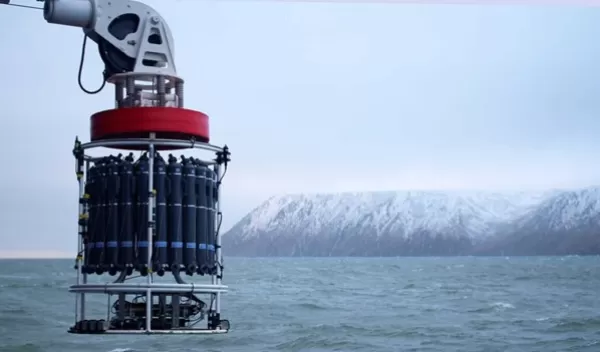
Study finds increasing potential for toxic algal blooms in a warming Alaskan Arctic
Changes in the northern Alaskan Arctic Ocean have reached a point at which a previously rare phenomenon -- widespread blooms of toxic algae -- could become more commonplace, potentially threatening a wide range of marine wildlife and the people who rely on local marine resources for food.
That’s the conclusion of a new study on harmful algal blooms of the toxic algae Alexandrium catenella published in the journal Proceedings of the National Academy of Sciences. Although microscopic algae in the ocean are most often beneficial and serve as the base of the marine food web, some species produce potent neurotoxins that can directly and indirectly affect humans and wildlife.
The U.S. National Science Foundation-supported study by scientists at the Woods Hole Oceanographic Institution and other institutions looked at samples from seafloor sediments and surface waters collected during 2018 and 2019 in the region extending from the northern Bering Sea to the Chukchi and Beaufort Seas north of Alaska.
The sediment samples allowed the researchers to count and map A. catenella cysts, a seed-like resting stage that lies dormant in the seafloor for much of the year, germinating or hatching only when water temperatures and nutrients are suitable. The newly hatched cells swim to the surface and multiply using the sun's energy, producing a "bloom" that can be dangerous due to the neurotoxins, called saxitoxins, the adult cells produce.
When the algae are consumed by fish and shellfish, those toxins can accumulate to levels that can be dangerous to humans and wildlife. In fish, toxin levels may be high in digestive and excretory organs like the stomach, kidney and liver, but are very low in muscle and roe.
Although fish can be potential toxin vectors, the human poisoning syndrome is called paralytic shellfish poisoning, with symptoms ranging from tingling lips to respiratory distress and death. The toxin can also cause illness and mortality in marine wildlife such as larger fish, marine mammals and seabirds -- a particular concern to members of coastal communities in northern and western Alaska who rely on a variety of marine resources for food.
"We've known about human and marine wildlife health risks associated with Alexandrium and its toxins in Alaskan waters for a long time, including occasional events north of Bering Strait, but these results show increased potential for large and recurrent blooms of this species as a new hazard for Alaska's Arctic," said Don Anderson, WHOI senior scientist, who led the study.
"This study is a great example of the interdisciplinary nature of research funded by NSF's Office of Polar Programs, where fundamental science in marine biology and physical oceanography come together to produce societally relevant results to protect coastal communities," said Rainer Amon, a program director in NSF's Office of Polar Programs.


